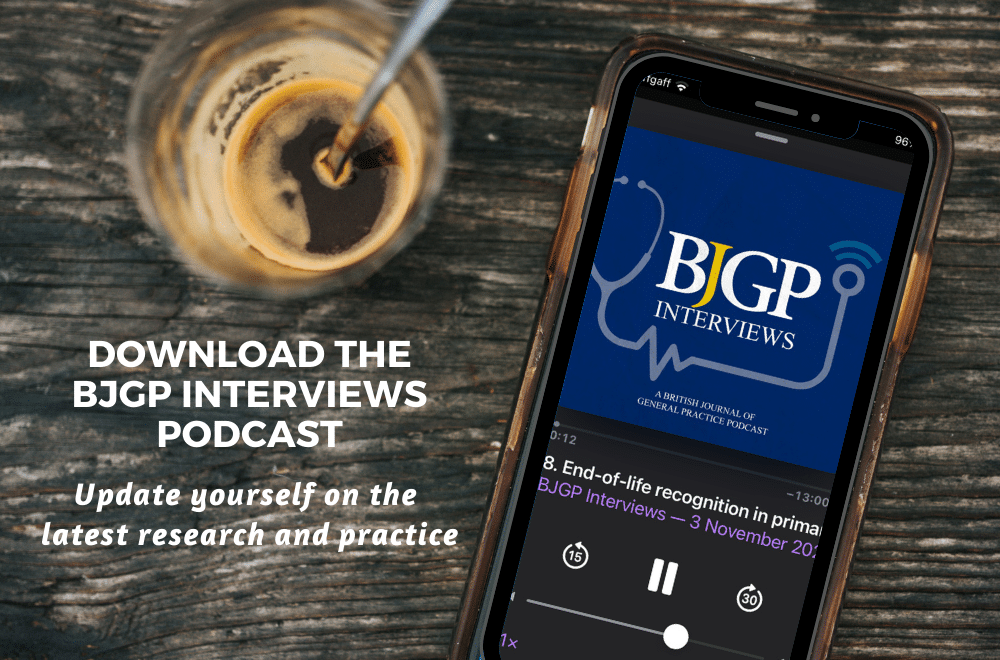 Ahmed Rashid is an academic clinical fellow in general practice at the University of Cambridge. He writes the regular monthly column “Yonder” in the BJGP: a diverse selection of primary care relevant research stories from beyond the mainstream biomedical literature. Twitter: @Dr_A_Rashid
Ahmed Rashid is an academic clinical fellow in general practice at the University of Cambridge. He writes the regular monthly column “Yonder” in the BJGP: a diverse selection of primary care relevant research stories from beyond the mainstream biomedical literature. Twitter: @Dr_A_Rashid
You can download the PDF here at BJGP.org.
Prostate biopsy
Prostate cancer remains one of the commonest causes of cancer death in the world and as active surveillance becomes an increasingly accepted alternative to radical treatment, the use of biopsies has extended to include monitoring as well as diagnosis. Transrectal ultrasound guided biopsy (TRUS-Bx) is therefore one of the most commonly performed urological procedures in the world. In a recent qualitative study embedded in a large randomised controlled trial, researchers from Bristol sought to compare men’s experiences of these biopsies compared to the expectations they had before it.1 Although TRUS-Bx was generally well tolerated, around one-quarter of men experienced problematic side effects and anxiety. In these cases, experiences tended to deviate from the information that they had received and they, therefore, felt unprepared for elements of the procedure or its sequelae. The study findings have been used to design an updated, comprehensive, evidence-based patient information leaflet and the authors reiterate the need for detailed discussions when counselling men about this procedure.
Childhood vaccination
Childhood vaccinations are such a routine part of modern health care that it can be easy to underestimate the huge reductions in global mortality that they have led to. However, despite increases in uptake, rates remain suboptimal with vaccine-preventable diseases still a public health risk in most parts of the world. A recent systematic review identified 28 studies evaluating parental interventions developed to improve early childhood (0–5 years) vaccine uptake.2 Receiving both postal and telephone reminders was the most successful reminder-based intervention. Educational interventions, meanwhile, were most successful in lower-income countries and when conducted through discussion. As you might imagine, the precise effectiveness of interventions depended on a number of factors, including the country and levels of parental vaccine hesitancy in the target population.
Oral health
Although health-related quality of life is a well-established outcome metric in medical research, the field of oral health has lagged behind. Several measures have attempted to capture how oral health impacts on quality of life but have all been directed to older adult populations. A team of public health researchers from Yale University recently sought to develop a questionnaire addressing issues that were more relevant to young adults.3 An initial item tool that included physical, psychological, and social constructs (developed by oral health experts) was sent to 553 adult participants via an online questionnaire. Scores on the self-perception and anxiety subscale were highest in this cohort (average age of 28 years) and tooth colour appeared to be the biggest concern. The initial psychometric properties of the survey were promising, and given that 80% of questions on previous instruments related to dentures, future studies should now be better placed to measure the impact of oral conditions on all age groups.
Medical tourism
The surge of UKIP in the recent general election has brought the term medical tourism into the public vocabulary. Although the political focus has been on the use of the NHS by visitors from abroad, many patients choose to leave the UK to pursue treatments from other parts of the world. The literature in this area is growing, although studies to date have focused mainly on specific types of procedures for which patients travel, including cosmetic, dental, and fertility treatments.
In a Social Science & Medicine article, a team of researchers sought to explore why and where patients from the UK choose to travel for health care.4 They found that while distance, costs, expertise, and availability of treatment were all factors influencing the decision to travel, choice of individual provider was based on informal networks including web for a, support groups, and personal recommendations. The authors suggest that given the importance of these networks, they may be an important target for efforts aimed at regulating medical tourism. Exactly how much regulation is needed is probably the more fundamental issue politically.
References
1. Wade J, Rosario DJ, Howson J, et al. (2015) Role of information in preparing men for transrectal ultrasound guided prostate biopsy: a qualitative study embedded in the ProtecT trial. BMC Health Serv Res 28(15):80.
2. Harvey H, Reissland N, Mason J (2015) Parental reminder, recall and educational interventions to improve early childhood immunisation uptake: a systematic review and meta-analysis. Vaccine 33(25):2862–2880, doi:10.1016/j.vaccine.2015.04.085.
3. Daneshvar M, Devji TF, Davis AB, White MA (Apr 17, 2015) Oral health related quality of life: a novel metric targeted to young adults. J Public Health Dent doi:10.1111/jphd.12099, [Epub ahead of print].
4. Hanefeld J, Lunt N, Smith R, Horsfall D (2015) Why do medical tourists travel to where they do? The role of networks in determining medical travel. Soc Sci Med 124:356–363.





